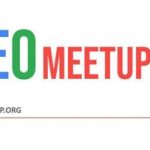Inbound marketing has been a game changer for brands and marketing professionals, and paired with the right approach to SEO and content marketing it has offered an almost assured win.
The path to success has come with some twists, however, even for strategists who closely followed best practices along way.
It’s been a learning curve from the beginnings of digital marketing to where we are today, a time when there’s no shortage of tools available to find out what your target audience needs and then deliver.
We’ve gone from the rise of social media platforms in the early 2000s – giving way to consumer preference for finding out about products and services through personal research – to a digital atmosphere currently where marketers are nearly forced to do away with traditional sales tactics.
Outbound marketing – or direct response marketing – is simply no longer as effective as value-added content in persuading the consumer to take action. It hasn’t been for more than a decade.
In the marketing environment that followed the birth of blogs, Facebook, Instagram, Twitter and other social networks, companies who wanted to connect with consumers had to create stories rather than pitches.
Just when brands began to realize that valuable content drove buyers, the digital landscape changed yet again. Inundated with story-driven articles and media posts across the web, it became difficult for consumer to sift through the sea of sameness and find true value.
Marketers with insight knew what needed to be done. The only way to connect with customers when value-added content was a necessity – a baseline – was to create content that exactly matched consumer demand.
Through careful SEO keyword research and an editorial plan that leveraged keywords to deliver solutions to buyers in every stage of the customer journey, brands were able to stand out.
Reaching the Informed Consumer
Today’s consumers are more informed and empowered than ever. They have many opportunities to research brands – their stories, services and offerings – and they’ll transact with those who best meet their needs. Often, without regard for loyalty (unless you can prove you provide extreme value).
The competition has been fierce for a while. Marketers can easily see how much influence they’ve had on consumers by looking at their website analytics including average time on page and bounce rate.
Storytelling doesn’t do it on its own anymore. Because many brands have learned how to create valuable content, true connection has become the differentiator.
Today’s successful brands have risen from the pack because they were able to deliver precisely what the consumer wanted at the time they were searching. And, not just once.
The top brands in any industry consistently have consumer-focused content in the right places – scattered all along their buyer’s journey from the sites where initial research takes place to those that drive the final sale.
Inbound marketing is now about creating valuable content that brings customers organically to a brand through the use of smart strategy. To stand out in the sea and truly connect with a buyer, it’s imperative to form some sort of relationship with the consumer. This is done through research.
By asking yourself what your target audience wants and needs, and connecting the dots from those desires (or pain points) to your unique offerings, you build authority, earn trust and make conversions.

Keyword Research to Drive SEO and Content Marketing
Adding a layer of smart keyword research to your stories makes them actionable. It ensures that you’re writing for your buyer’s needs and wants at any time or place throughout the customer journey.
Using SEO keywords to drive your content – rather than as a quick-win SEO tactic – makes it more likely that your ideal buyer will actually be searching for your article. It increases the chance of your story being found and well received.
When you design a SEO and content marketing strategy, it can be tempting to come up with a list of topics along with a list of keywords and try to make them work together. This approach almost always fails.
The key to really connecting with your buyers is to let them dictate your content. When you conduct keyword research, don’t just look at which words are trending within your industry. Take time to move away from a keyword-first focus and look toward truly satisfying your buyer.
Marketers need to keep in mind throughout the keyword research process that the goal is to find out what consumers want to learn about. The winning plan is to move toward an audience-centric strategy.
When performing keyword research, it’s essential that you dive deep into the intent behind the keywords and keyword phrases you see. What stands out to you within your research as your target buyer’s pain points and needs? What types of content does it look like they’re searching for? Are they currently engaged in conversations around these pain points and needs? How does your brand’s expertise match what your customer is looking for?
This is the process to winning the SEO and content marketing game today. It’s not about ranking for keywords or simply putting out content for the sake of putting out content.
The best marketers, and the most successful brands, strive to provide relevant content and they deliver that high-quality content by letting their audience chart the course for their stories. Your job as a marketing professional is to listen to what your customer wants and then execute brilliantly through engaging and action-focused copy.
Your content should be delivered through your unique angle that connects your brand to your customers like no other brands do. This involves evaluating your USPs and analyzing your competition.
To find out how to approach keyword research and content with your audience’s needs in mind, and how to deliver value based on your unique selling points, contact Galileo Tech Media.




